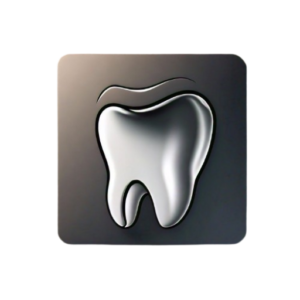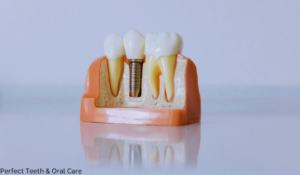What is Dry Socket?
Dry socket (also called alveolar osteitis) is a painful dental condition that sometimes happens after a tooth extraction. Normally, after a tooth is removed, a blood clot forms in the empty socket (the hole left behind by the tooth). This blood clot serves as a protective barrier, covering the exposed bone and nerves and helping the area heal. However, when the blood clot doesn’t form, gets dislodged, or dissolves too soon, the bone and nerve endings become exposed. This leads to intense pain and makes healing slower.
People with dry socket often describe a throbbing pain that occurs along the nerves and may radiate to the side of the face. The socket may appear empty, swollen, and irritated, and it can fill with food particles, worsening the discomfort. The condition typically begins 1 to 3 days after a tooth extraction, especially with third molars or wisdom teeth. While over-the-counter medicine might not be enough to relieve the discomfort, a dentist or oral surgeon can provide treatments to ease the pain and promote proper healing.
How Often Does Dry Socket Happen?
Dry socket is a condition that occurs after tooth extractions, affecting about 2% to 5% of cases. While it can happen after the removal of any tooth, it is most likely to occur after wisdom teeth removal. Based on my experience, patients undergoing tooth extractions for wisdom teeth are at higher risk, especially if proper aftercare isn’t followed.
Symptoms and Causes
Symptoms
- Worsening pain in the mouth or face, starting two to three days after a tooth extraction.
- Pain at the site that feels like it radiates to the head, neck, ear, eye, or temple on the same side of the face.
- Loss of part or all of the blood clot at the removal site.
- The socket may appear empty, with bone that you can see.
- Bad taste in your mouth.
- Bad breath (halitosis) or a foul odor coming from the affected area.
- Severe discomfort, often worsening within a few days after the tooth is removed.
Causes
Dry socket often happens in the most cases after particularly difficult tooth removal, especially when there are risk factors that increase chances of getting this condition.
- Smoking: People who smoke are over three times as likely to get a dry socket compared to non-smokers.
- Drinking through a straw: The suction force can dislodge blood clots; avoid straws for at least one week after your tooth extraction.
- Swishing too vigorously: Vigorous swishing can dislodge the blood clot; dentists recommend soaking the site instead.
- Poor oral hygiene: Not keeping the surgical site clean can result in bacterial contamination.
- Taking birth control: Oral contraceptives containing estrogen may interfere with the body’s natural healing process.
- Bacteria entering the socket: Bacteria can invade the socket and disrupt healing.
- Injury at the surgical site: This can occur with difficult tooth extractions.
- Impacted wisdom tooth removal: Irregular wisdom tooth development or position increases the risk.
Dry Socket: Diagnosis and Treatment
Diagnosis
Dentists typically suspect dry socket when a person experiences severe pain following a tooth extraction. This pain is usually localized to the area where the tooth used to be, and it often intensifies a few days after the procedure. To confirm the diagnosis, the dentist or oral surgeon will closely examine the spot for signs of healing or irregularities, such as the absence of a blood clot or the presence of exposed bone.
In some cases, your dentist might take dental X-rays to make sure there are no tooth fragments stuck in your jaw or to rule out other potential issues like bone infection. Severe pain following tooth removal is often a key indicator, but the dentist will also ask about other symptoms and may perform a thorough check of your mouth and teeth. If needed, X-rays of your mouth and teeth can help identify small pieces of tooth root or bone remaining in the surgical site, ensuring a comprehensive assessment.
Treatment
Easing the pain and discomfort caused by dry socket is the main goal of treatment. Dentists or oral surgeons follow specific methods to help reduce symptoms and promote healing. They may start by thoroughly cleaning the socket to remove food bits or other loose materials that might cause irritation or infection. You will also receive detailed instructions for proper self-care at home to ensure effective recovery. Below are the key steps involved in the treatment:
- Flushing the socket: The dentist may use salt water or other solutions to clean the area.
- Medicated dressing: The socket may be packed with medicated gauze, gel, or paste to ease pain and promote healing.
- Pain relievers: Depending on the severity of your symptoms, your dentist may recommend over-the-counter (OTC) pain relievers, anti-inflammatory medications, or even prescription pain medicine.
- Ice application: Dentists may show you how to use ice packs to reduce discomfort and swelling.
- Syringe for cleaning: A plastic syringe with a curved tip might be provided to flush the socket with water, salt water, or a prescription rinse.
Even after starting treatment, it’s essential to keep your scheduled appointments for dressing changes and follow-up care. While symptoms often improve within a few days, proper cleaning of the surgical site and consistent care help ensure long-term relief and a smooth recovery.
Does dry socket require antibiotics?
Not always does a dry socket require antibiotics, but if your dentist suspects an infection, they’ll likely prescribe a course of antibiotics to address the issue. While infected dry sockets are rare, they can still happen, making it essential to follow your dentist’s advice closely to prevent further complications.
Will a dry socket heal on its own?
Yes, in most cases, a dry socket will heal on its own. However, because most people experience moderate to severe dry socket pain, it’s best to see your dentist for prompt treatment to help ease discomfort sooner.
Prevention of Dry Socket
- Don’t smoke or use tobacco products; try to quit before surgery.
- Avoid warm or carbonated drinks and don’t drink through a straw.
- Stick to soft foods and avoid anything hard, crunchy, or chewy.
- Follow all postsurgical instructions from your dentist or oral surgeon.
- Practice good oral care by brushing twice a day and flossing once daily.
- Choose a dentist or oral surgeon with experience in tooth removal.
- Discuss any prescription medicines, herbs, or supplements you’re taking with your doctor, as some may affect blood clotting.
Dry Socket vs. Clot
It’s important to know the difference between a dry socket and blood clot. Blood clots are a good thing because they help promote healing after tooth extraction. You should develop a blood clot in the socket hole that’s left behind, and it’ll look like a dark-colored scab. If you see a blood clot, leave it alone and don’t try to remove it, as it helps protect the extraction site and supports proper recovery.
FAQs
Will a dry socket heal on its own?
Yes, in most cases, a dry socket will heal on its own. However, because most people experience moderate to severe dry socket pain, seeing your dentist for prompt treatment can help ease discomfort sooner.
How do you get rid of dry socket asap?
To get rid of the dry socket as soon as possible, see your dentist. They may clean the socket, apply medicated dressing to relieve pain, and provide instructions for self-care at home, like rinsing with salt water and using prescribed pain relievers.
What are the warning signs of a dry socket?
The warning signs of a dry socket include:
- Severe pain that starts a few days after tooth extraction and may radiate to the ear, eye, temple, or neck.
- Empty-looking socket where the blood clot is missing, exposing bone.
- Foul odor or bad taste in the mouth.
- Swelling and inflammation around the extraction site.
If you notice these symptoms, contact your dentist promptly.
Can a dry socket be treated at home?
No, a dry socket cannot be effectively treated at home. You need to see a dentist for proper cleaning, pain relief, and dressing. Home remedies may provide temporary relief but won’t address the underlying issue.
How Long Does Dry Socket Last?
With proper care, a dry socket usually heals in seven to 10 days as new tissue grows to cover the exposed area. During this time, maintaining regular brushing and flossing is important to keep your mouth healthy and to reduce your risk of infection. Following your dentist’s advice and keeping the area clean can help the healing process go smoothly.
When Am I No Longer at Risk for Dry Socket?
You’re most likely to get a dry socket within three days after tooth extraction. If you haven’t developed dry socket by day five, you’re probably in the clear. Following your dentist’s instructions carefully during this period can help reduce the risk and ensure proper healing.


